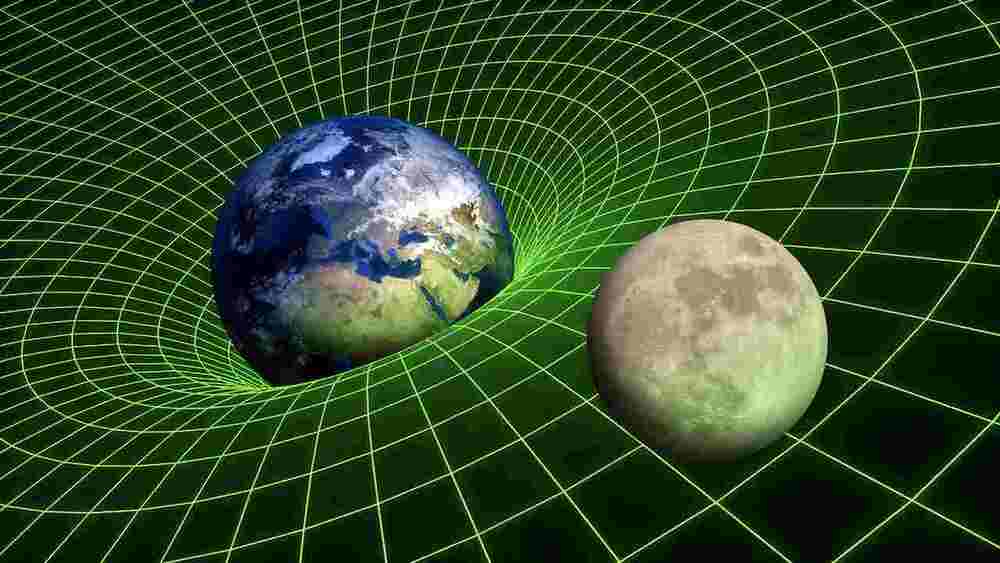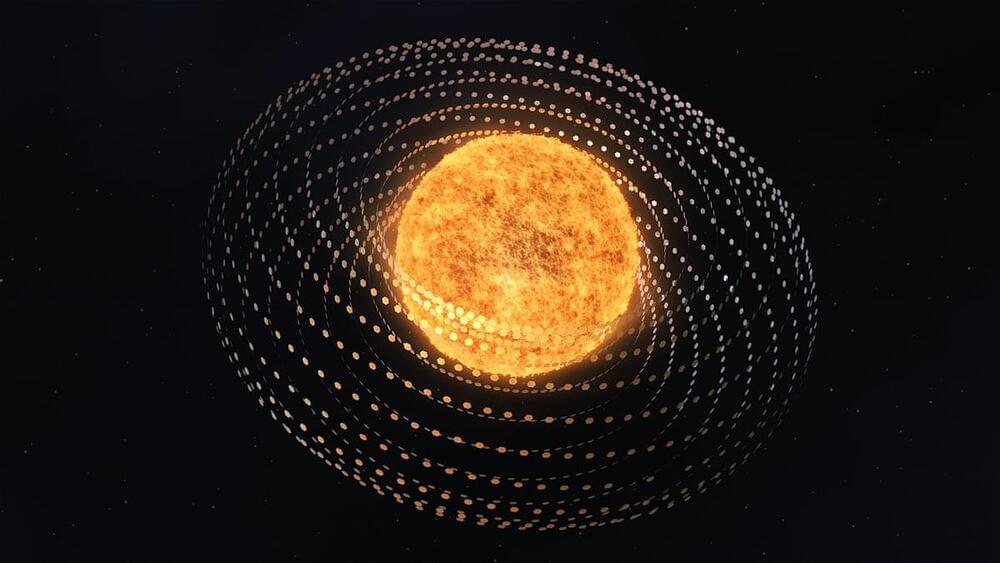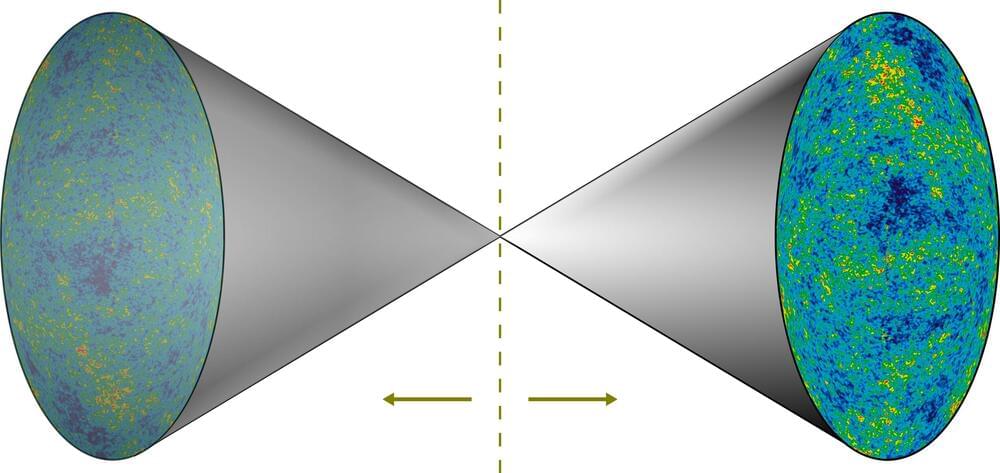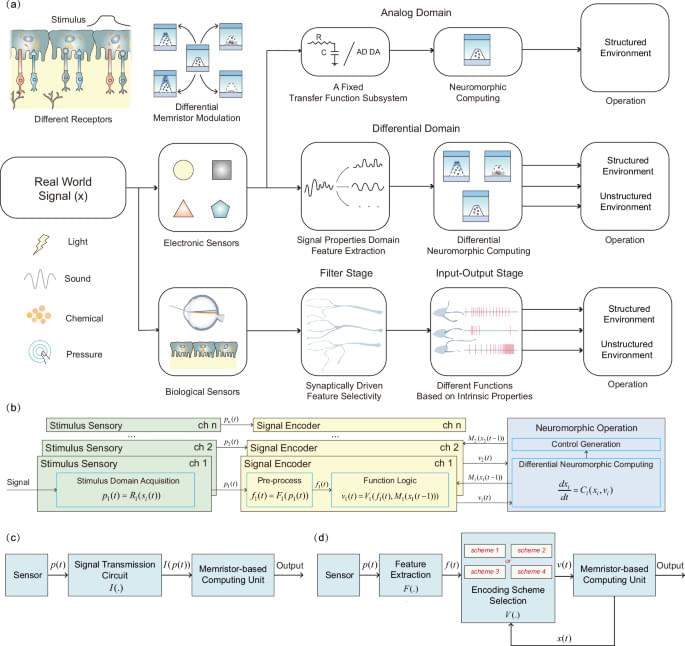TO AVOID DATA COLLAPSE, Algorithmic Input models must have human-generated inputs, but those inputs are “running out” if only those existing on the internet are used.
There is no such thing as unlimited data.


Researchers for the first time showed, how gravity can exist without mass, providing an alternative theory that could potentially mitigate the need for dark matter…
Dark matter is a hypothetical form of matter that is implied by gravitational effects that can’t be explained by general relativity unless more matter is present in the universe than can be seen. It remains virtually as mysterious as it was nearly a century ago when first suggested by Dutch astronomer Jan Oort in 1932 to explain the so-called “missing mass” necessary for things like galaxies to clump together.
Now Dr. Richard Lieu at The University of Alabama in Huntsville (UAH) has published a paper in the Monthly Notices of the Royal Astronomical Society that shows, for the first time, how gravity can exist without mass, providing an alternative theory that could potentially mitigate the need for dark matter.
“My own inspiration came from my pursuit for another solution to the gravitational field equations of general relativity—the simplified version of which, applicable to the conditions of galaxies and clusters of galaxies, is known as the Poisson equation—which gives a finite gravitation force in the absence of any detectable mass,” says Lieu, a distinguished professor of physics and astronomy at UAH, a part of the University of Alabama System.
The American theoretical physicist, Brian Greene explains various hypotheses about the causation of the big bang. Brian Greene is an excellent science communicator and he makes complex cosmological concepts more easy to understand.
The Big Bang explains the evolution of the universe from a starting density and temperature that is currently well beyond humanity’s capability to replicate. Thus the most extreme conditions and earliest times of the universe are speculative and any explanation for what caused the big bang should be taken with a grain of salt. Nevertheless that shouldn’t stop us to ask questions like what was there before the big bang.
Brian Greene mentions the possibility that time itself may have originated with the birth of the cosmos about 13.8 billion years ago.
To understand how the Universe came to be, scientists combine mathematical models with observations and develop workable theories which explain the evolution of the cosmos. The Big Bang theory, which is built upon the equations of classical general relativity, indicates a singularity at the origin of cosmic time.
However, the physical theories of general relativity and quantum mechanics as currently realized are not applicable before the Planck epoch, which is the earliest period of time in the history of the universe, and correcting this will require the development of a correct treatment of quantum gravity.
Certain quantum gravity treatments imply that time itself could be an emergent property. Which leads some physicists to conclude that time did not exist before the Big Bang. While others are open to the possibility of time preceding the big bang.

A single universal equation can closely approximate the frequency of wingbeats and fin strokes made by birds, insects, bats and whales, despite their different body sizes and wing shapes, Jens Højgaard Jensen and colleagues from Roskilde University in Denmark report in a new study published in PLOS ONE on June 5.
The ability to fly has evolved independently in many different animal groups. To minimize the energy required to fly, biologists expect that the frequency that animals flap their wings should be determined by the natural resonance frequency of the wing. However, finding a universal mathematical description of flapping flight has proved difficult.
Researchers used dimensional analysis to calculate an equation that describes the frequency of wingbeats of flying birds, insects and bats, and the fin strokes of diving animals, including penguins and whales.
Quantum simulators are now addressing complex physics problems, such as the dynamics of 1D quantum magnets and their potential similarities to classical phenomena like snow accumulation. Recent research confirms some aspects of this theory, but also highlights challenges in fully validating the KPZ universality class in quantum systems. Credit: Google LLC
Quantum simulators are advancing quickly and can now tackle issues previously confined to theoretical physics and numerical simulation. Researchers at Google Quantum AI and their collaborators demonstrated this new potential by exploring dynamics in one-dimensional quantum magnets, specifically focusing on chains of spin-1/2 particles.
They investigated a statistical mechanics problem that has been the focus of attention in recent years: Could such a 1D quantum magnet be described by the same equations as snow falling and clumping together? It seems strange that the two systems would be connected, but in 2019, researchers at the University of Ljubljana found striking numerical evidence that led them to conjecture that the spin dynamics in the spin-1⁄2 Heisenberg model are in the Kardar-Parisi-Zhang (KPZ) universality class, based on the scaling of the infinite-temperature spin-spin correlation function.

This post is also available in:  עברית (Hebrew)
עברית (Hebrew)
AI technology is spreading quickly throughout many different industries, and its integration depends on users’ trust and safety concerns. This matter becomes complicated when the algorithms powering AI-based tools are vulnerable to cyberattacks that could have detrimental results.
Dr. David P. Woodruff from Carnegie Mellon University and Dr. Samson Zhou from Texas A&M University are working to strengthen the algorithms used by big data AI models against attacks.
ICTP lectures “Topology and dynamics of higher-order networks”
- Network topology: 1 https://youtube.com/watch?v=mbmsv9RS3Pc&t=7562s.
- Network topology:2 https://youtube.com/watch?v=F6m5lPfk5Mc&t=3808s.
-Network geometry.
Topological Dirac equation and Discrete Network Geometry-Metric cohomology Speaker: Ginestra Bianconi (Queen Mary University of London) Higher-order networks [1] capture the many-body interactions present in complex systems and are dramatically changing our understanding of the interplay between topology of and dynamics. In this context, the new field of topological signals is emerging with the potential to significantly transform our understanding of the interplay between the structure and the dynamics in complex interacting systems. This field combines higher-order structures with discrete topology, discrete topology and dynamics and shows the emergence of new dynamical states and collective phenomena. Topological signals are dynamical variables, not only sustained on the nodes but also on edges, or even triangles and higher-order cells of higher-order networks. While traditionally network dynamics is studied by focusing only on dynamical variables associated to the nodes of simple and higher-order networks topological signals greatly enrich our understanding of dynamics in discrete topologies. These topological signals are treated by using algebraic topology operators as the Hodge Laplacian and the discrete Dirac operator. Recently, growing attention has been devoted to the study of topological signals showing that topological signals undergo collective phenomena and that they offer new paradigms to understand on one side how topology shape dynamics and on the other side how dynamics learns the underlying network topology. These concepts and idea have wide applications. Here we cover example of their applications in mathematical physics and dynamical systems. The field is topical at the moment with many new results already established and an already rich bibliography, therefore it is very timely to propose a series of lectures on the topic to introduce new scientists to this emergent field. Here we propose a series of lectures for a broad audience of scientists addressed mostly to physicist and mathematicians, but including also computer scientists and neuroscientists. The course is planned to be introductory, and self-contained starting from minimum set of prerequisites and focus mostly on the mathematical physics aspect of this field. The course will cover 4 lectures and 1 seminar. Ref: [1] Bianconi, G.: Higher-order networks: An introduction to simplicial complexes. Cambridge University Press (2021). [2] Bianconi, G., 2021. The topological Dirac equation of networks and simplicial complexes. Journal of Physics: Complexity, 2, p.035022.[3]Bianconi, G., 2023. The mass of simple and higher-order networks. Journal of Physics A: Mathematical and Theoretical, 57, p.015001.[4] Bianconi, G., 2024. Quantum entropy couples matter with geometry. arXiv preprint arXiv:2404.08556.[5] Millán, A.P., Torres, J.J. and Bianconi, G., 2020. Explosive higher-order Kuramoto dynamics on simplicial complexes. Physical Review Letters, 124(21), p.218301.

I don’t know if this true but it definitely could be as most civilizations are probably more advanced than the earth.
A survey of five million distant solar systems, aided by ‘neural network’ algorithms, has discovered 60 stars that appear to be surrounded by giant alien power plants.
Seven of the stars — so-called M-dwarf stars that range between 60 percent and 8 percent the size of our sun — were recorded giving off unexpectedly high infrared ‘heat signatures,’ according to the astronomers.
Natural, and better understood, outer space ‘phenomena,’ as they report in their new study, ‘cannot easily account for the observed infrared excess emission.’

The accelerated expansion of the present universe, believed to be driven by a mysterious dark energy, is one of the greatest puzzles in our understanding of the cosmos. The standard model of cosmology called Lambda-CDM, explains this expansion as a cosmological constant in Einstein’s field equations. However, the cosmological constant itself lacks a complete theoretical understanding, particularly regarding its very small positive value.

Differential neuromorphic computing, as a memristor-assisted perception method, holds the potential to enhance subsequent decision-making and control processes. Compared with conventional technologies, both the PID control approach and the proposed differential neuromorphic computing share a fundamental principle of smartly adjusting outputs in response to feedback, they diverge significantly in the data manipulation process (Supplementary Discussion 12 and Fig. S26); our method leverages the nonlinear characteristics of the memristor and a dynamic selection scheme to execute more complex data manipulation than linear coefficient-based error correction in PID. Additionally, the intrinsic memory function of memristors in our system enables real-time adaptation to changing environments. This represents a significant advantage compared to the static parameter configuration of PID systems. To perform similar adaptive control functions in tactile experiments, the von Neumann architecture follows a multi-step process involving several data movements: 1. Input data about the piezoresistive film state is transferred to the system memory via an I/O interface. 2. This sensory data is then moved from the memory to the cache. 3. Subsequently, it is forwarded to the Arithmetic Logic Unit (ALU) and waits for processing.4. Historical tactile information is also transferred from the memory to the cache unless it is already present. 5. This historical data is forwarded to the ALU. 6. ALU calculates the current sensory and historical data and returns the updated historical data to the cache. In contrast, our memristor-based approach simplifies this process, reducing it to three primary steps: 1. ADC reads data from the piezoresistive film. 2. ADC reads the current state of the memristor, which represents the historical tactile stimuli. 3. DAC, controlled by FPGA logic, updates the memristor state based on the inputs. This process reduces the costs of operation and enhances data processing efficiency.
In real-world settings, robotic tactile systems are required to elaborate large amounts of tactile data and respond as quickly as possible, taking less than 100 ms, similar to human tactile systems58,59. The current state-of-the-art robotics tactile technologies are capable of elaborating sudden changes in force, such as slip detection, at millisecond levels (from 500 μs to 50 ms)59,60,61,62, and the response time of our tactile system has also reached this detection level. For the visual processing, suppose a vehicle travels 40 km per hour in an urban area and wants control effective for every 1 m. In that case, the requirement translates a maximum allowable response time of 90 ms for the entire processing pipeline, which includes sensors, operating systems, middleware, and applications such as object detection, prediction, and vehicle control63,64. When incorporating our proposed memristor-assisted method with conventional camera systems, the additional time delay includes the delay from filter circuits (less than 1 ms) and the switching time for the memristor device, which ranges from nanoseconds (ns) to even picoseconds (ps)21,65,66,67. Compared to the required overall response time of the pipeline, these additions are negligible, demonstrating the potential of our method application in real-world driving scenarios68. Although our memristor-based perception method meets the response time requirement for described scenarios, our approach faces several challenges that need to be addressed for real-world applications. Apart from the common issues such as variability in device performance and the nonlinear dynamics of memristive responses, our approach needs to overcome the following challenges:
Currently, the modulation voltage applied to memristors is preset based on the external sensory feature, and the control algorithm is based on hard threshold comparison. This setting lacks the flexibility required for diverse real-world environments where sensory inputs and required responses can vary significantly. Therefore, it is crucial to develop a more automatic memristive modulation method along with a control algorithm that can dynamically adjust based on varying application scenarios.